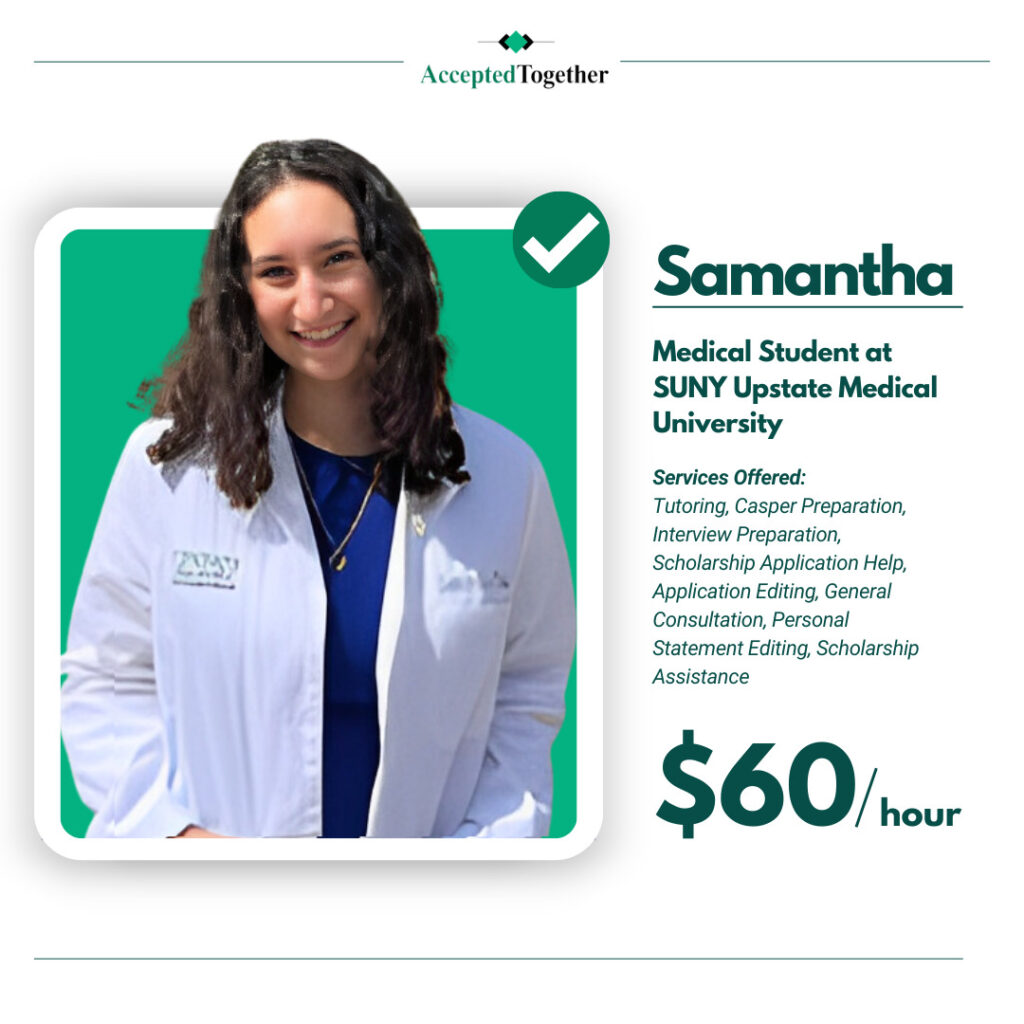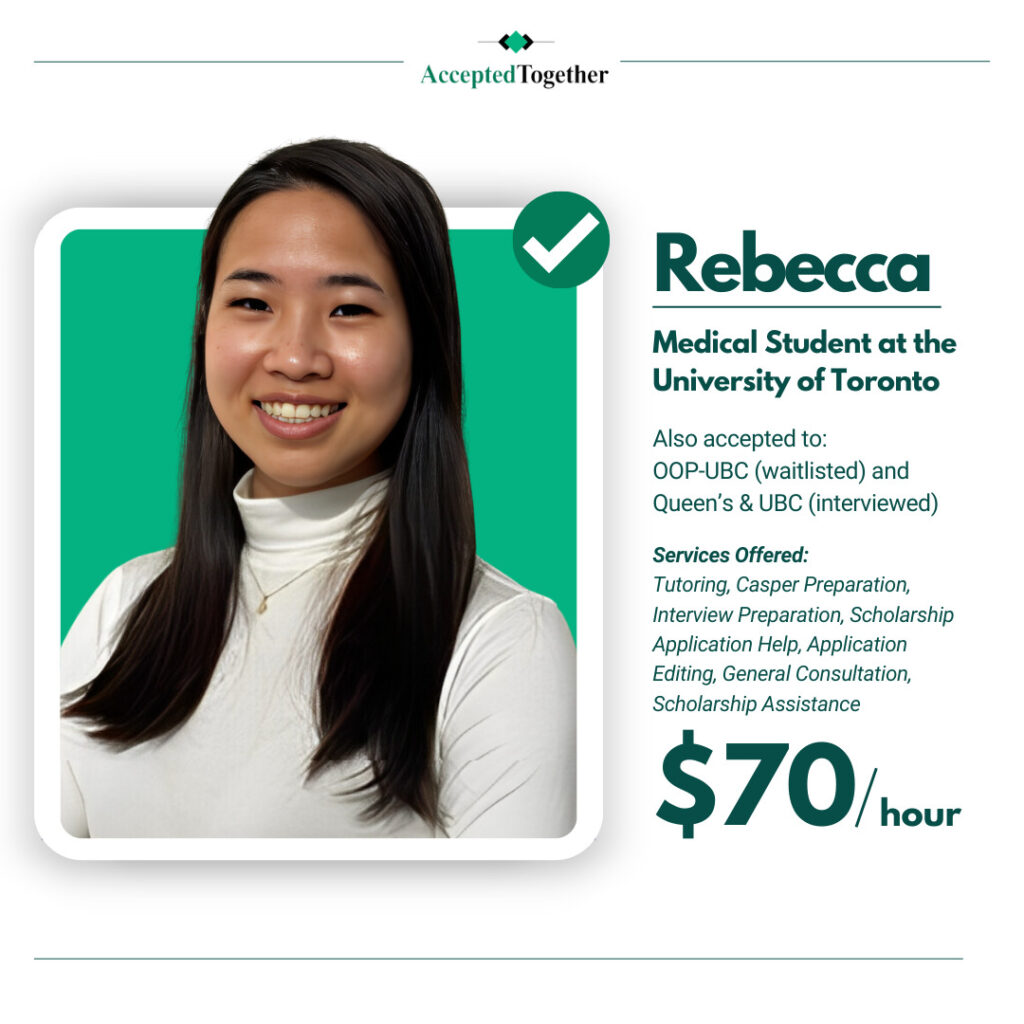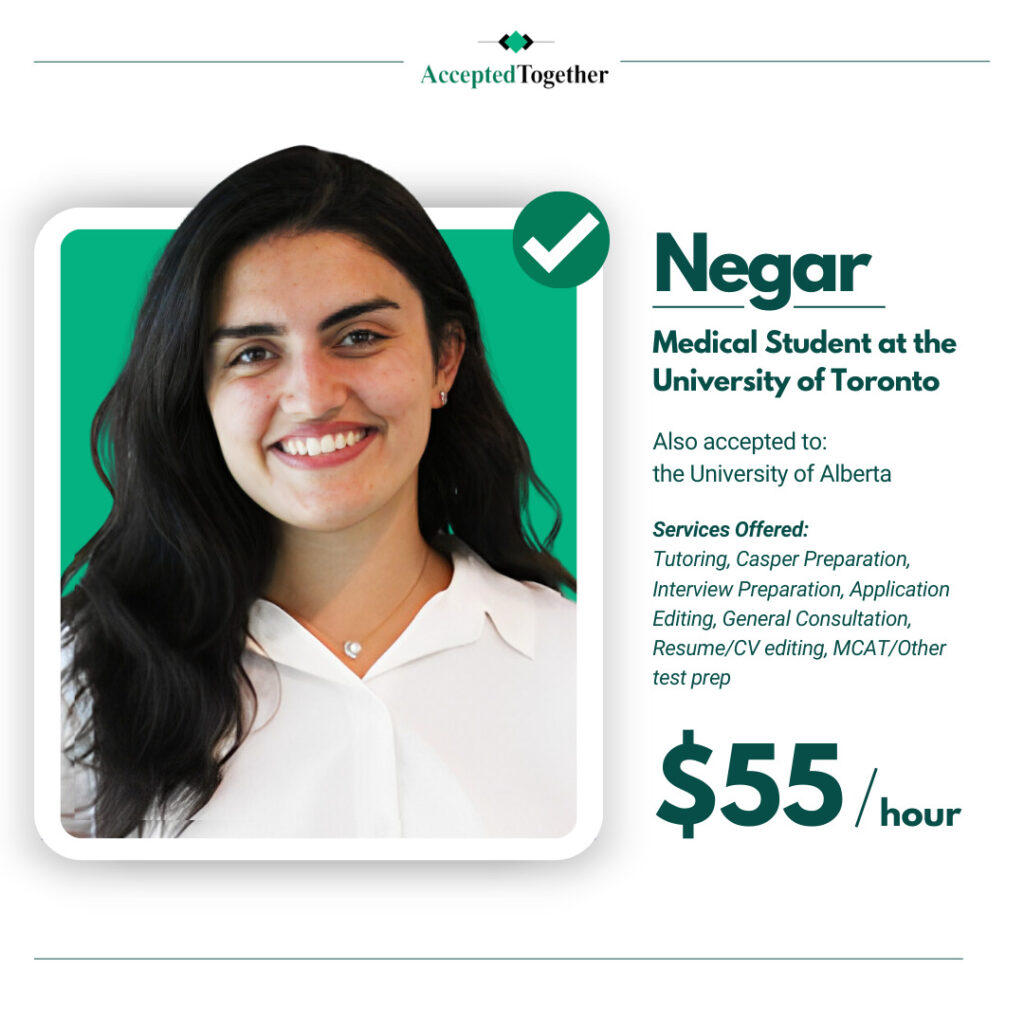Last updated on April 23rd, 2025 at 01:32 pm

Table of Contents
Introduction
Navigating the residency application process in Canada can feel overwhelming, but having the right resources can make all the difference. Whether you’re a Canadian medical graduate or an international medical graduate (IMG) looking to secure a residency spot, the CaRMS guide is your essential toolkit for success. CaRMS (Canadian Resident Matching Service) serves as the central system that connects graduates to residency programs across the country, simplifying the application process.
This guide is packed with everything you need to know, from timelines and key documents to acing your interviews and creating a solid rank order list. Understanding the ins and outs of CaRMS, like how to prepare your transcripts, reference letters, and personal statement, can help you stand out to residency programs. With so many moving parts in the CaRMS process, staying organized and meeting deadlines is crucial.
Our CaRMS guide breaks down each step so you’re not left guessing. Whether you’re applying to family medicine, internal medicine, or another specialty, this guide has got you covered. We’re here to help you avoid common mistakes and ensure your application is as strong as possible. Let’s get you ready to match!
Click to see hundreds of consultants who can mentor you:


Understanding the CaRMS Application
The CaRMS application is an essential process for anyone hoping to secure a residency position in Canada. Whether you’re a Canadian medical graduate or an international medical graduate (IMG), applying through CaRMS is mandatory if you want to continue your medical training in Canada. It’s a centralized system that streamlines the process, saving you time and effort by allowing you to apply to multiple residency programs through a single platform. In this section, we’ll dive into what CaRMS does and how you can use the CaRMS online portal to make your application process smoother.
What CaRMS Does
CaRMS stands for the Canadian Resident Matching Service, and its primary role is to match medical graduates with residency programs across Canada. It does this using a well-structured algorithm that takes into account both the applicants’ and the residency programs’ preferences. After completing your medical degree, CaRMS is the next big hurdle on your path to becoming a licensed physician in Canada.
Whether you’re applying for a popular specialty like internal medicine or a less competitive field, CaRMS is your go-to system. It ensures that the match between you and a residency program is made based on mutual interest, which can increase the chances of a successful match. Essentially, the algorithm is a two-way street: applicants rank programs based on where they want to train, and programs do the same for applicants. On match day, both lists are fed into the algorithm, which then determines where you’ll spend the next few years completing your residency.
One of the key advantages of the CaRMS system is its fairness. It allows graduates from Canadian and international medical schools to compete for residency spots on equal footing, as long as they meet the eligibility requirements. However, it’s essential to pay attention to the details, as even small mistakes can hurt your chances of matching. For example, missing a deadline or submitting incomplete documents can make or break your application.
CaRMS Online Portal
The CaRMS Online Portal is where the entire application process happens. This platform is used by both applicants and residency programs, and it serves as the hub for submitting documents, requesting references, and tracking your application status. Once you register and gain access, you’ll spend a lot of time on this portal, so becoming familiar with it early is crucial.
The portal opens for registration several months before the main residency match takes place, giving you plenty of time to upload documents and fill out your profile. If you’re a Canadian medical graduate, you don’t need to create an account; CaRMS will automatically email you login details when the registration period opens. However, if you’re an international medical graduate or a previous applicant, you’ll need to register manually or use your existing credentials. This process is straightforward but make sure to do it early to avoid last-minute issues.
Within the portal, there are two main parts of the application: the information you input directly and the supporting documents you need to upload or assign. The first part involves entering your personal details, educational background, work history, and any other required information that applies to all programs you’re applying to. This is similar to filling out a CV or resume. Since you’re entering this data only once, the portal allows you to apply to multiple programs without having to re-enter the same information over and over.
The second part of the application involves uploading supporting documents. These documents can include your medical school transcript, exam scores, reference letters, and personal statements, depending on the requirements of the specific programs you’re applying to. Some programs may ask for additional documents, such as a CV or specific forms like an Applicant Support Form, so it’s important to read through each program’s requirements carefully. Missing a required document can disqualify you from consideration for that program.
Another feature of the CaRMS Online Portal is the tracking system. After uploading your documents, you can monitor their status to ensure they’ve been received and processed by CaRMS. The Document Tracking section is especially helpful, as it shows you which documents are still pending and which have been confirmed. This takes some of the guesswork out of the process and ensures that you don’t miss any critical pieces of your application.
Additionally, CaRMS allows you to request and manage reference letters through the portal. You’ll need to send requests to your chosen referees, who will then upload their letters directly into the system. Reference letters are a vital part of your application, so make sure to choose referees who can speak to your skills and experiences in a meaningful way. It’s also a good idea to give your referees plenty of notice to write and submit their letters before the deadline.
The CaRMS Online Portal isn’t just for submitting applications—it’s also where you’ll receive interview invitations and track your match status. After you submit your applications, program directors will review your materials and decide whether to offer you an interview. You’ll be able to view and manage your interview requests through the portal, so staying on top of your notifications is important. Once the interviews are done, you’ll rank your preferred programs, and the programs will rank their preferred candidates. The CaRMS algorithm then takes these rankings and matches applicants with residency programs.
Key Documents for CaRMS
When applying for residency programs through CaRMS, submitting the right documents is critical. These documents allow residency programs to get a complete picture of your academic and professional background. In this section, we’ll cover four essential documents: Medical School Transcripts, MSPR (Medical Student Performance Record), Exam Results, and Reference Letters. Each document serves a unique purpose in helping programs evaluate your qualifications, so it’s important to ensure everything is complete and submitted on time.
Medical School Transcripts
Your medical school transcript is one of the most important documents in the CaRMS application process. It provides a record of your academic performance throughout your medical education. If you’re a graduate of a Canadian medical school, you typically have two options for submitting your transcript. You can either upload the document yourself to the CaRMS portal, or you can request your medical school to upload it on your behalf using their CaRMS Online Undergraduate Portal account.
International medical graduates (IMGs) also have several options. If your medical school is registered with physiciansapply.ca, you can transfer your transcript through that system directly into the CaRMS portal. Alternatively, IMGs can upload their transcript themselves or request that their medical school upload it via CaRMS Online.
It’s important to review each program’s specific transcript requirements, as some programs may have additional expectations for format or delivery. Additionally, applicants who have previously participated in the CaRMS match since 2013 will already have their past documents saved in their profile, which can save time if they are reapplying.
MSPR (Medical Student Performance Record)
The Medical Student Performance Record (MSPR), also known as the dean’s letter, is another key document that residency programs use to assess candidates. The MSPR offers an overview of your academic and clinical performance during medical school. It highlights your strengths, evaluates your clinical rotations, and may include comments on your professionalism and skills. Essentially, it’s a snapshot of how well you performed throughout your medical education.
For graduates of Canadian medical schools, the MSPR is typically transferred directly to CaRMS by the medical school itself. However, it’s still your responsibility to ensure that your university completes the transfer on time and that you monitor the Document Tracking section of the CaRMS portal to confirm its receipt.
International graduates have a slightly different process. IMGs can upload their MSPR if they have a copy, or they can request their medical school to submit it through the CaRMS Undergraduate Portal. Regardless of how it’s submitted, make sure that your MSPR accurately reflects your achievements and aligns with the requirements of the residency programs you’re applying to.
Exam Results
Your exam results are another critical component of your CaRMS application. Residency programs use these scores to gauge your clinical knowledge and readiness for residency training. CaRMS receives exam results directly from the Medical Council of Canada (MCC), including the results from the MCCQE I and MCCQE II, as well as the National Assessment Collaboration (NAC) exam for international graduates.
If you’ve taken the United States Medical Licensing Examination (USMLE) or the Clinical Assessment Program (CAP) from the University of British Columbia, those scores can also be submitted through CaRMS. It’s important to note that CaRMS only accepts exam results that are transferred directly from the issuing organizations, so you won’t be able to upload these documents yourself. Make sure to verify that the exam results you plan to submit are current and valid, as programs will not accept expired scores.
If you’re an IMG, you may also need to provide language exam results if your medical school instruction was in a language other than English or French. Provincial eligibility requirements or individual programs will specify if this is necessary. Keeping your exam results up to date and properly submitted is a key part of ensuring your application is complete.
Reference Letters
Reference letters are often the deciding factor when it comes to standing out from other applicants in the CaRMS process. These letters provide residency programs with insight into your work ethic, clinical skills, and overall character from the perspective of someone who has supervised or worked closely with you in a clinical setting.
CaRMS offers several types of reference letters. The most common is the Letter of Reference, which is a detailed endorsement from a physician, professor, or other professional who has observed your performance firsthand. Some programs may require more specific reference letters, such as structured reference letters for disciplines like Family Medicine or Emergency Medicine. There’s also an option to request an Applicant Support Form for certain programs, although this form is not provided by CaRMS itself.
When requesting reference letters, it’s best to ask people who have known you for a significant amount of time and can speak to both your clinical skills and personal qualities. The CaRMS online portal allows you to send requests to referees directly, and they will upload their letters to the portal once they’re ready. Remember to give your referees plenty of time to write and submit their letters well before the deadline.
Having strong, well-written reference letters from respected individuals can significantly boost your chances of matching with a residency program. Be sure to provide your referees with any additional materials they might need, such as details about the programs you’re applying to or specific points you’d like them to emphasize in their letter.
Navigating the CaRMS Timeline
Getting your CaRMS application ready on time is one of the most important steps in securing a residency position. Missing key deadlines can lead to unnecessary stress, or worse, disqualification from programs you’re interested in. To avoid this, it’s essential to keep track of important dates and understand the different phases of the CaRMS process. Below, we break down the key aspects of the CaRMS timeline, from initial registration to the interview period.
Overview of Key Deadlines
The CaRMS timeline is packed with critical dates that you need to follow closely. The process officially begins in July, when registration opens for first-time applicants. After that, the timeline is segmented into a series of important deadlines that each applicant must adhere to if they want their application to be considered. These dates include the submission of documents like medical transcripts, MSPRs, and reference letters, as well as ranking deadlines and interview periods.
Some of the most critical deadlines include the date when CaRMS Online opens in September, allowing you to start the application process by entering personal information and uploading documents. By mid-November, faculties are expected to send in transcripts and MSPRs, so you’ll want to confirm that your documents have been received and processed. Referees are also required to submit their reference letters through the CaRMS Online referee portal by the end of November, and the final application submission is due around the same time.
Each residency program may also have additional deadlines, such as those related to extra documents or specific requirements, so it’s important to stay organized and double-check each program’s details. In January, the interview offer status updates are posted, followed by the national interview period, which runs through February. After interviews, you’ll have until mid-February to submit your rank order list, with match day occurring in early March. Staying on top of these dates is crucial to making sure you don’t miss any opportunities.
Application Submission
The application submission deadline is one of the most significant dates in the CaRMS timeline. Typically, all applications and supporting documents must be submitted by late November. The deadline is usually at noon Eastern Time, so it’s important to be mindful of time zones and submit everything well before the last minute to avoid any technical issues. Once the deadline passes, file review begins, and you won’t be able to make changes to your application.
Before submitting your application, make sure that all the required documents—such as medical school transcripts, MSPRs, exam results, and reference letters—are uploaded and correctly assigned to the programs you’re applying to. This is particularly important because each program may have different requirements, and failing to include a specific document could mean your application isn’t considered. You should also use the Document Tracking section in CaRMS Online to check that everything has been received and is in order.
Another tip for a smooth submission process is to proofread everything thoroughly. This includes double-checking the information you’ve entered into the portal, as well as reviewing your personal letters and any other written sections. Small errors in spelling or formatting can reflect poorly on your attention to detail, so it’s worth taking the extra time to ensure everything is accurate.
Interview Period
After your application has been submitted and reviewed, the next step is the interview period. CaRMS interviews take place between mid-January and early February, with applicants being notified of their interview status starting in early January. Each program conducts interviews differently, so it’s important to read through the specific requirements for each program you’re applying to. You can expect traditional panel interviews, multiple mini-interviews (MMIs), or video-based interviews depending on the residency program.
Preparing for the interview period is crucial, as this is your chance to make a lasting impression on the selection committee. A great way to practice is by doing mock interviews, which allow you to get comfortable answering typical interview questions. You should also familiarize yourself with each program’s values and mission so that you can tailor your answers to reflect what they are looking for in a resident.
Another key point during the interview period is staying organized. Since many programs will have different interview dates and formats, it’s a good idea to keep a detailed schedule of when each interview will take place. Be sure to also prepare the necessary technology for any video interviews, testing your equipment beforehand to avoid any technical issues.
The interview period can be one of the most stressful parts of the CaRMS process, but preparation and attention to detail can make a big difference. Your goal is to show residency programs that you are a great fit, both in terms of your clinical skills and your compatibility with the program’s culture.
Preparing for CaRMS Interviews
Preparing for your CaRMS interviews is a crucial step in the residency application process. Once your application is submitted and you’ve received interview invitations, the next challenge is making a strong impression during the interviews. Different programs may use various interview styles, and knowing what to expect can help ease the nerves. Below, we’ll go through the types of interviews you may encounter, how mock interviews can help you prepare, and some common questions that might come up during your CaRMS interviews.
Interview Types
During the CaRMS interview period, you can expect programs to use a range of interview formats. The most common formats are traditional panel interviews, multiple mini-interviews (MMIs), and video interviews.
A traditional panel interview involves a group of interviewers, often including faculty members, residents, and sometimes program directors. These interviews tend to be structured, with a mix of behavioral and clinical questions aimed at understanding your problem-solving abilities, communication skills, and fit for the program. You may be asked to describe clinical experiences or ethical dilemmas you’ve encountered, so preparing clear examples of your work is key.
Multiple mini-interviews (MMIs) are structured differently. Instead of one longer interview, MMIs consist of several short stations where you answer scenario-based questions or discuss specific topics. Each station typically lasts around 5-10 minutes, and you’ll rotate through them, speaking to different interviewers. The goal of MMIs is to assess your ability to think on your feet and respond to a variety of situations. This format is commonly used in Family Medicine and some other specialties, so if you’re applying to these programs, be sure to practice answering questions quickly and confidently.
Finally, video interviews have become more popular, particularly in the wake of the COVID-19 pandemic. These can either be live or asynchronous, meaning you record your responses to pre-set questions. For live video interviews, treat them just like in-person interviews: dress professionally, test your equipment in advance, and ensure your background is neat and free from distractions. If you’re completing a pre-recorded video interview, you’ll typically have a set time to respond to each question, so it’s important to keep your answers concise and to the point.
Mock Interviews
One of the most effective ways to prepare for CaRMS interviews is by doing mock interviews. Practicing in a simulated interview environment helps you get comfortable with the types of questions you’ll face and how to present yourself confidently. Whether it’s a panel interview, MMI, or video interview, the more you practice, the more comfortable you’ll become with the process.
Mock interviews can help you identify areas where you may struggle, such as maintaining eye contact, avoiding filler words, or structuring your answers effectively. By recording these practice interviews, you can review your performance and spot any habits or mistakes that need to be corrected. You might also want to practice with a friend, mentor, or advisor who can give you constructive feedback.
Timing is another key element that mock interviews help with. In MMIs, for example, you have limited time at each station, so practicing your pacing is important. In panel interviews, you might have more time, but it’s still essential to keep your responses focused and avoid rambling. Mock interviews can help you fine-tune this balance.
Additionally, practicing mock interviews can help you work on your non-verbal communication. Things like posture, facial expressions, and hand gestures are all part of how you present yourself. Even in video interviews, these cues play a role in how you come across to the interviewers. Practicing helps ensure that your body language aligns with the message you want to convey.
Common Questions
The types of questions you’ll encounter during your CaRMS interviews can vary depending on the program, but there are a few common themes you should be ready for. Generally, questions will fall into one of three categories: behavioral, clinical, or situational.
Behavioral questions are designed to assess how you’ve handled certain situations in the past, particularly in a clinical or team environment. These questions often start with phrases like, “Tell me about a time when…” or “Describe a situation where…” A good strategy is to use the STAR method—Situation, Task, Action, and Result—to structure your answers clearly and logically. For example, you might be asked to describe a time when you faced a challenging patient interaction or had to work under pressure during a clinical rotation.
Clinical questions, on the other hand, are meant to test your medical knowledge and clinical reasoning. These might be case-based questions where you are given a clinical scenario and asked how you would diagnose or treat the patient. It’s a good idea to review key clinical topics and guidelines relevant to the specialty you’re applying for so you can handle these questions confidently. You don’t need to know everything, but being able to talk through your thought process clearly is important.
Situational questions are more hypothetical and often assess your ethical reasoning or decision-making skills. For example, you might be asked how you would handle a situation where a patient refuses treatment, or how you would manage a conflict between team members. These questions are aimed at understanding your ability to think critically and apply ethical principles in real-world settings.
By preparing for these common question types, you’ll be more equipped to handle whatever comes your way during the interview period. The key is to practice answering these questions out loud, either by yourself or in a mock interview setting, so you can refine your answers and present them with confidence during your CaRMS interviews.
Ranking and Match Day
Ranking your residency program choices and preparing for Match Day is one of the final and most important steps in the CaRMS process. This phase determines where you’ll spend the next several years of your medical training, so it’s crucial to approach it carefully. Below, we’ll break down how to create your rank order list, what to expect on Match Day, and what your options are if you don’t match.
Rank Order List
After your interviews are complete, it’s time to create your rank order list. This list is where you rank the residency programs you’ve applied to in order of your true preference. CaRMS uses an algorithm that matches applicants and programs based on these rankings, so it’s important to be strategic and honest about your choices.
One of the key tips for creating a strong rank order list is to prioritize the programs you genuinely want to attend. CaRMS recommends ranking programs in the order you prefer, regardless of how competitive you think those programs are. Since the matching algorithm prioritizes your preferences, you won’t lose any opportunities by ranking your dream program first. However, only rank programs that you are truly willing to attend. If you rank a program highly and match with it, you are bound by the match contract to accept that residency spot.
Another tip is to apply to multiple sites within a single program if that option is available. Some programs have different campuses or locations where you can train, and ranking multiple sites can increase your chances of matching with that program.
Lastly, CaRMS advises applicants to rank at least six residency programs to optimize their chances of matching. While this number isn’t a requirement, applying broadly and ranking multiple programs gives you more options, especially if you’re applying to a competitive specialty.
Match Results
Match Day is one of the most exciting—and nerve-wracking—days in the CaRMS process. This is the day when you find out where you’ve matched for residency training. On Match Day, you can log into your CaRMS account and view your match results by selecting “Match Results” in the portal.
If you match with a program, that program will contact you within 30 days to provide further details and welcome you to their team. It’s important to remember that the results of the CaRMS match are legally binding. Once you’ve matched, you are required to accept the position, and the program is also committed to offering you a spot.
If you’ve matched with your top choice, congratulations! If you’ve matched with a lower-ranked program, it’s still a success—matching is highly competitive, and any match means you’re on the path to residency. If your match wasn’t your top choice, consider the benefits that the program offers, including the training opportunities, location, and resident support. Remember, this is just the beginning of your residency journey, and there are plenty of ways to make the most of your training, no matter where you end up.
Post-Match Options
Unfortunately, not everyone matches in the first iteration of CaRMS. If you don’t match during the first round, you still have options. The second iteration of the CaRMS match gives unmatched applicants a second chance to secure a residency position.
On the day of the first iteration Match Day, the list of unfilled residency positions is released. This list is your key resource for determining which programs still have spots available. The second iteration of the CaRMS match has a slightly accelerated timeline, so you’ll need to move quickly to submit applications for the available spots. Make sure to review the second iteration timeline carefully and ensure you meet all the deadlines.
If you still don’t match after the second iteration, you can participate in the Post-Match Process (PMP). The PMP allows unmatched applicants to apply to any remaining residency positions that are still accepting applications. Keep in mind that participation in the PMP is free because no matching or ranking is involved. However, it’s important to act fast, as programs fill any remaining spots on a first-come, first-served basis.
While going unmatched can be a tough experience, it’s important to stay positive and proactive. Many applicants who don’t match in the first round go on to secure great residency positions in the second iteration or PMP. It may also be an opportunity to review your application, seek feedback, and strengthen your profile for the next application cycle.
Tips for a Successful Application
Applying through CaRMS is a competitive and complex process, so it’s important to give yourself the best possible chance of success. While there’s no single formula that guarantees a match, there are a few strategies that can help you put together a strong application. These include starting early, paying close attention to detail, and making full use of available resources. Let’s break down each of these tips to help guide you through the CaRMS process.
Start Early
The CaRMS application process can feel overwhelming due to the number of documents, deadlines, and program-specific requirements you need to keep track of. That’s why starting early is crucial. When you give yourself enough time, you’re more likely to avoid rushing through important tasks, which can lead to errors or missing deadlines. Starting early also gives you time to plan out each stage of the application, from requesting reference letters to crafting your personal letters.
By beginning your CaRMS application a few months in advance, you can dedicate small, manageable chunks of time to different parts of the process. For example, you might begin by gathering your supporting documents—like medical transcripts, MSPRs, and exam results—before moving on to writing personal statements and requesting references. Breaking the process down into steps helps reduce stress and ensures that you’re not scrambling at the last minute.
Additionally, starting early gives you more time to reach out to your referees. Reference letters can take time to write, and your referees may have busy schedules. Giving them as much notice as possible allows them to write thoughtful, detailed letters, which can greatly improve your chances in the CaRMS match.
Attention to Detail
When it comes to the CaRMS application, attention to detail is key. Even small mistakes, like a typo in your personal letter or submitting an incomplete document, can hurt your chances. Residency programs receive many applications, so presenting a polished and professional application is crucial to standing out for the right reasons.
One of the most important areas to pay attention to is the specific requirements of each program. Some programs may require additional documents, like a custom CV or an Applicant Support Form. Others may have specific word limits for personal letters or ask for particular types of reference letters. Make sure you’re carefully reading the requirements for each program and tailoring your application accordingly.
It’s also a good idea to proofread every part of your application, from the personal information you enter into the CaRMS portal to your written documents. Reviewing everything for accuracy helps ensure that there are no spelling or grammatical errors and that all the required documents are included. This may seem like a small step, but it makes a big difference in how your application is received.
Tracking the submission of your documents is another detail that shouldn’t be overlooked. The CaRMS Online system allows you to see which documents have been received and which are still pending. Regularly checking this section of the portal helps you stay on top of things and resolve any issues, like missing documents, before the submission deadline.
Utilize Resources
Preparing a successful CaRMS application doesn’t mean doing everything on your own. There are plenty of resources available to help you navigate the process and put together a strong application. One of the first resources to tap into is your network—whether it’s classmates, mentors, or advisors—who have gone through the CaRMS process before. They can provide you with valuable insights and share their experiences, giving you a better sense of what to expect and how to approach different parts of your application.
In addition, CaRMS itself offers several resources to guide applicants, including a detailed timeline, FAQs, and helpful instructions for submitting documents and creating your rank order list. Be sure to take full advantage of the CaRMS Online portal to keep track of deadlines, request reference letters, and ensure your application is complete.
Mock interviews are another useful resource, especially when preparing for the interview phase. Practicing your answers with peers or mentors can help you feel more confident and improve your performance on interview day. Recording your practice sessions is also a good way to identify areas for improvement, like body language, tone of voice, or the structure of your responses.
Lastly, don’t forget to reach out to your medical school’s career services or postgraduate offices, as they often have workshops, templates, and one-on-one advising available to help you with your CaRMS application. Utilizing these resources can ease the pressure and ensure that you’re putting your best foot forward.
Click to see hundreds of consultants who can mentor you:


Conclusion
In conclusion, navigating the CaRMS process may seem daunting, but with careful planning, attention to detail, and the right resources, it’s manageable. Whether you’re just beginning to gather documents, preparing for interviews, or ranking your residency choices, staying organized and starting early will set you up for success. The CaRMS guide offers step-by-step instructions to help you through each phase, from the application submission to Match Day. It’s important to take advantage of all the tools available, like mock interviews and advice from mentors, to strengthen your chances.
Pay close attention to deadlines and ensure that all your documents, including reference letters and exam results, are submitted on time. A well-prepared application shows programs your commitment and readiness for residency. If you don’t match in the first iteration, remember there are post-match options available, so don’t get discouraged. The key is to stay focused and proactive throughout the entire process. With the right mindset and thorough preparation, you’ll be one step closer to securing a residency spot. This CaRMS guide is your go-to resource for understanding the process and ensuring that your application stands out.
Frequently
Asked Questions
CaRMS stands for the Canadian Resident Matching Service. It’s a centralized system that matches medical graduates with residency programs across Canada. Applicants submit their applications and supporting documents through the CaRMS Online portal, and programs rank the candidates. The final match is determined through an algorithm that pairs candidates with programs based on mutual preferences.
To submit your application through CaRMS, you first need to register on the CaRMS Online portal. Once logged in, you’ll need to complete two parts: inputting your personal information and uploading supporting documents like transcripts, reference letters, and your Medical Student Performance Record (MSPR). Make sure to check each program’s specific requirements and track the status of your documents to ensure everything is complete before the submission deadline.
The key documents you need to submit for CaRMS include your medical school transcripts, MSPR, exam results (such as MCCQE and NAC), and reference letters. Each program may have additional requirements, such as a residency CV or custom reference forms. Always check the specific requirements for each program to ensure you’ve included everything they ask for.
The rank order list is where you rank the residency programs you applied to in order of preference. Programs also rank their candidates, and the CaRMS algorithm matches applicants with programs based on these rankings. It’s important to rank programs based on where you genuinely want to train, but only include programs you would be willing to attend since you are required to accept a match if offered.
If you don’t match in the first iteration, you can participate in the second iteration of CaRMS. After the first match, a list of unfilled residency positions is released, and you’ll have the opportunity to apply to these programs. If you still don’t match, you can join the Post-Match Process (PMP) to apply for any remaining positions that are still available.
It’s recommended to start preparing your CaRMS application a few months before the submission deadline. Starting early gives you time to gather all required documents, request reference letters, and polish your personal statement. It also allows you to double-check that all information is accurate and complete, reducing the risk of last-minute errors or missed deadlines.



